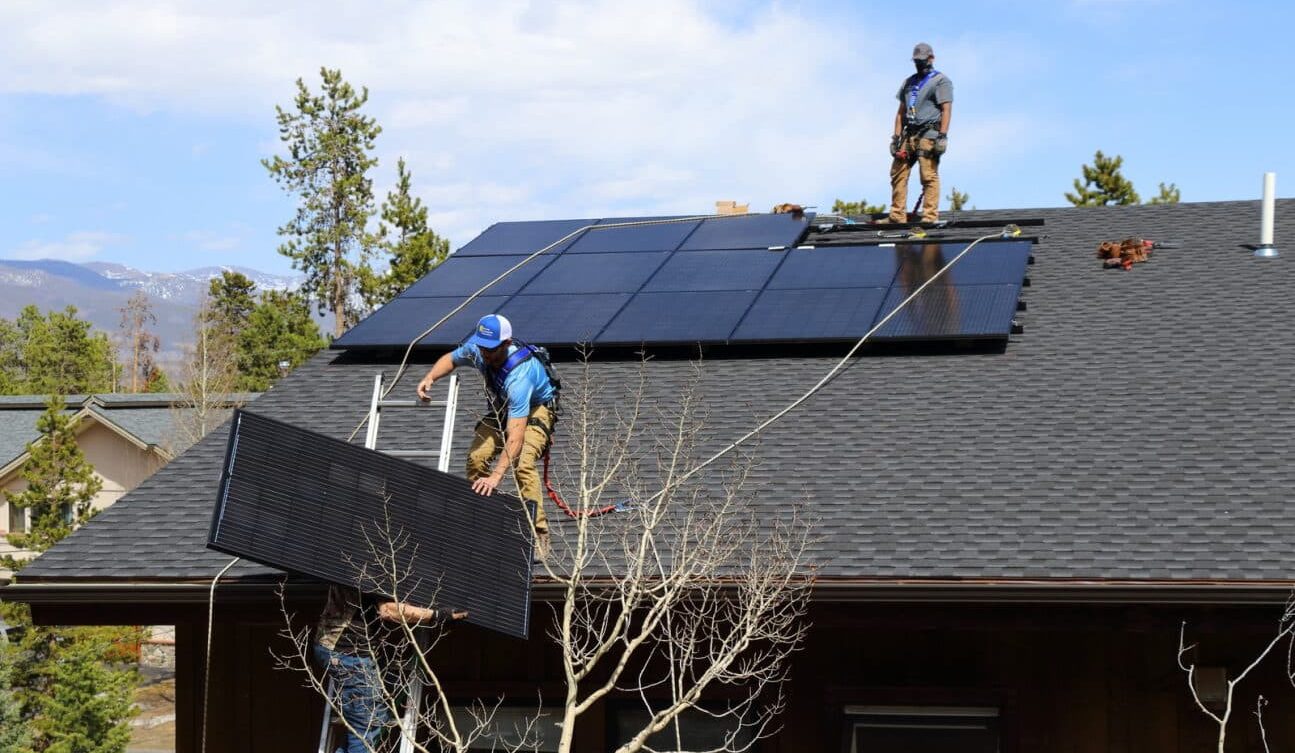
- High Country Conservation
- February 2, 2024
- Ask Eartha
Dear Eartha, I’m interested in getting solar panels, but I have to admit…I’m not sure how they work. Can you break it down for me?
Solar energy is the most abundant source of energy on Eartha. How abundant? In just 90 minutes, enough solar energy hits the planet to power worldwide energy consumption for a whole year. So it might seem like an understatement to say that it’s important to understand how we can harvest all this energy.
One way to do this is through solar photovoltaic technology, or in regular human-speak, solar panels. Although solar energy looks quite simple – just some sleek panels on your roof, right? – there’s a lot of cool science going on to turn that solar energy into electricity for your TV.
What’s inside a solar panel?
Think of solar panels like a baking sheet full of cookies. Similarly, each solar panel is made up of rows of neatly arranged solar cells. The cells are sandwiched between glass and other protective materials so that they withstand years of harsh outdoor weather. Yes, even snow.
How do solar panels work?
In essence, when sunlight strikes a solar cell, electrons start moving, generating electrical current. However, this initial form of electricity is not suitable for domestic use. Cue the inverter! On solar PV systems installed these days, each panel has an inverter attached to the back. Inverters are handy and crucial appliances that transform the electricity into a form we can use in our homes to power our lights, toaster and more.
But what happens when you’re not using all that solar-generated power at the exact moment it’s produced? No worries! That’s where net-metering steps in. Net-metering is a utility program that allows excess electricity generated by your panels to flow back to the grid to help our neighbors. In return for sharing your extra electrons, you receive a credit for the utility company. Here in Summit County, Xcel Energy provides a virtual bank for its customers with solar panels. When you produce more electricity than you use, it goes into that bank. Then at night or in the winter when the sun shines less, you get to take credit from your bank before paying for electricity.

Where will solar perform the best?
Solar panels are built to function in every climate; however, some locations and homes are better contenders for solar. Homes with south-facing roofs are best because they receive the most amount of sunlight but east and west still generate enough. Another thing to consider: if you have a lot of tall trees, they may shade your panels and decrease your production. Since solar panels last 25 – 30 years or even longer, you want to make sure your roof is newer so that panels do not have to be taken off and put back on when you need a new roof. If your roof doesn’t have enough space, panels can also be mounted on poles dug into the ground.
Solar? In this economy?
With a 30% federal tax credit and up to $3,000 in local incentives – Solarize Summit just may help. On February 1st, High Country Conservation Center (HC3) launched the annual Solarize Summit program – this year with larger incentives. Haven’t heard of Solarize? It’s a community program designed to make going solar simple and more affordable. HC3 works with a local installer, Active Energies Solar (AES), to provide free solar site assessments to Summit County homeowners and businesses. During the assessment, AES staff will evaluate your property to see if solar is a good option for your home. Learn more at HighCountryConservation.org, and let the sun work its magic on your energy bills.
Now the next time you stroll past a house with panels or spot a solar field, you’ll know the secret behind the magic show. And hey, it’s not all hocus-pocus – just the incredible science of solar power at work.
Ask Eartha Steward is written by the staff at the High Country Conservation Center, a nonprofit dedicated to waste reduction and resource conservation. Submit questions to Eartha at info@highcountryconservation.org.
